
A few weeks ago, I was privileged to present a photography workshop at MJSA ConFab. Even though I don't necessarily like to be known as "The Jewelry Photography Guy," I seem to be gaining that reputation. After all, this was the 4th time I've enjoyed teaching jewelry photography techniques at an MJSA event.
I'm always being asked the same few questions about photography, which usually includes questions about macro lenses, lighting, and light boxes or enclosures. Everyone is always surprised that I don't use a macro lens at all, and that I prefer a large amount of light, and my preferred enclosure is a PhotoCubics FlashBox.
The PhotoCubics FlashBox uses a built in strobe, like the flash on your camera, instead of steady light. It's designed to give you the perfect photo every time. It saves a lot of time; so much so, that no one should ever complain about the ~$2000 price tag. It easily saves that much in labor within the first month of ownership.
Without a FlashBox, all jewelry photography falls prey to the same problems: low light and shallow depth of field. Low light always produces a gray or blue background and off color jewelry. Shallow depth of field is what happens when you use a macro lens. A shallow depth of field manifests as a small portion of your photo that's in focus, while the rest is extremely blurry.
The shallow depth of field problem plagues most online jewelry catalogs, simply because most jewelry photographers use a macro lens. You can see a clear example of this shallow photography on the Jewelry & Timepiece Mechanix website review I recently wrote. I like the product catalog on the jmechanix.com website because each item has a name, SKU, and at least a once sentence description. Here's one example:
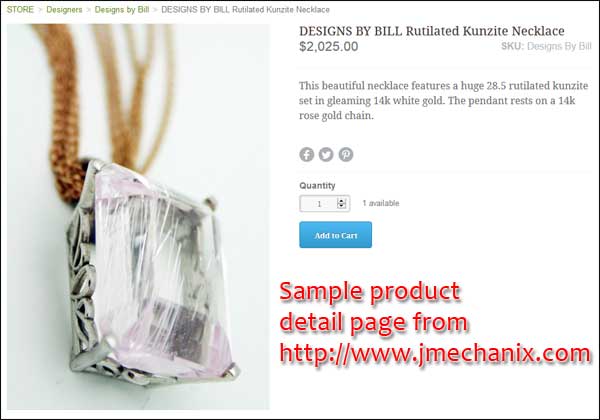
This product sells for $2025, and according to the description "the pendant rests on a 14k rose gold chain," yet the chain is completely blurry in the photo. Even though e-commerce is set up on that website, that photo doesn't convey enough trust to spend that much money online.
Convey Trust
When you see a great picture online, you receive a message of trust. When you see a poorly focused photo, you have to wonder what flaws are hidden.
I've zoomed in on the above kunzite pendant so you can see the limited area in focus:
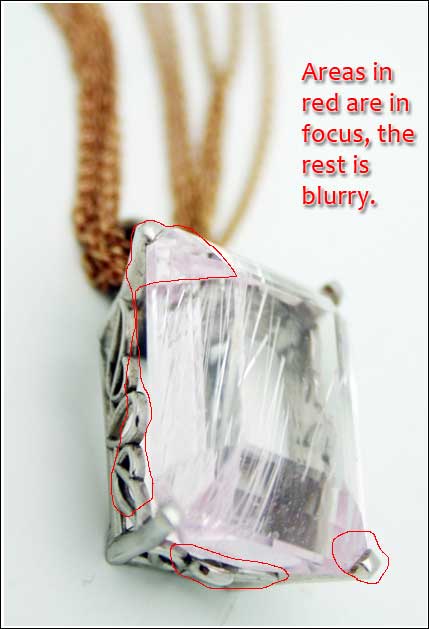
This limited focal area was created by a macro lens and a very shallow depth of field. This looks like it might be an attractive pendant, but the blurry picture doesn't convey the trust I need before spending that money. E-commerce websites need to build trust before someone is willing to make a purchase. The better your pictures, the better your sales.
Here's one of the photos I shot quickly during my MJSA ConFab demonstration. This photo is straight from my camera without any retouching.
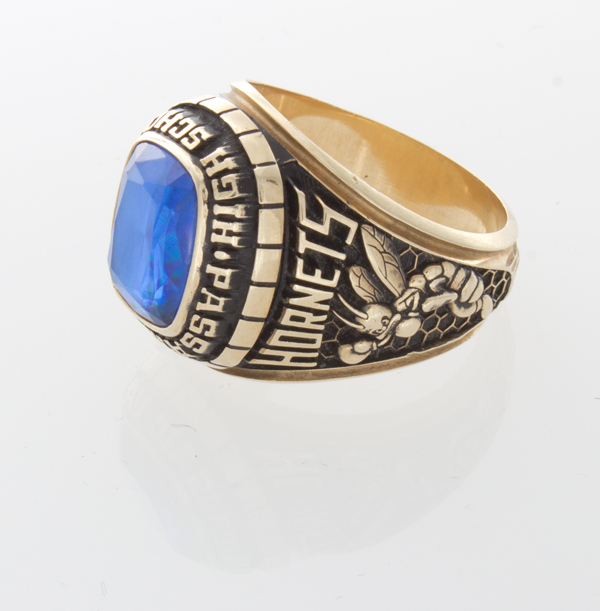
The depth of field and focus on this ring is exactly what's needed to show the brushed finish inside the ring shank. You could potentially use this photo as is to sell on an e-commerce site, but I wanted to tweak it a little to make the background white and bring out the facets in the gemstone.
It took about 4 minutes to get these results using PhotoShop:
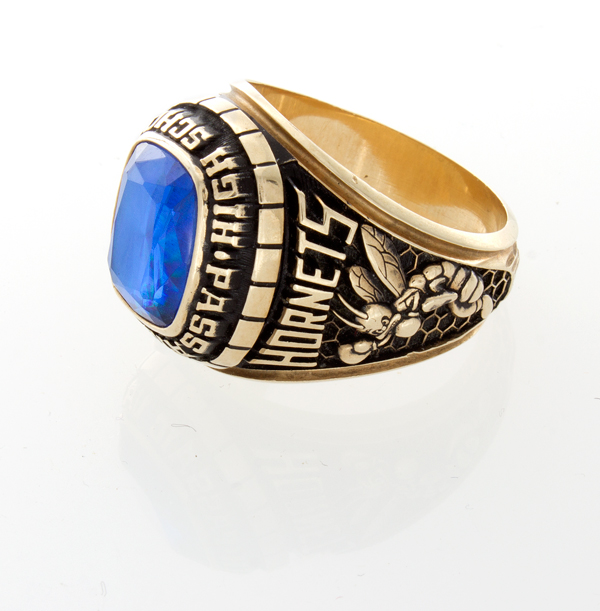
Canon and Nikon cameras come with software that allows you to slightly tweak your photos immediately after taking the shot. Your camera needs to be tethered to your computer to make this work right, and you won't need PhotoShop to get similar results to what you see above.
Compare this sharp photo to the blurry photo of the pendant above. The crisp image should provide a much greater comfort zone because all the details are clearly visible in the picture.
Most e-commerce website also allow for even closer zooming in of the product photo. Here's an example of that zoom:
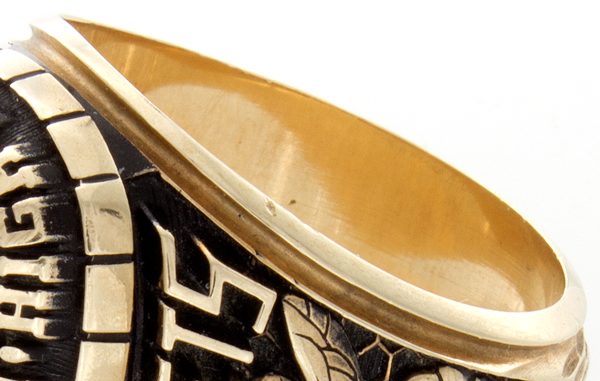
In that photo, you can clearly see the finish inside the ring shank and you can even see the wear on the ring. At this zoomed in level, we can see that the ring isn't perfectly in focus because the far back edge isn't perfectly sharp.
As a final example, here's an estimation of what this class ring photo would look like if I had used a macro lens and focused on the closest part of the ring.
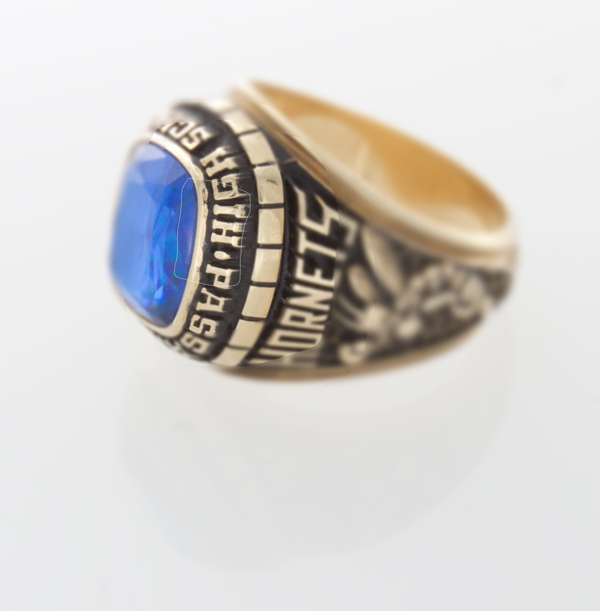
This is what a macro lens produces as a result of a shallow depth of field. Notice how you can't even see the honeycomb shape behind the Hornets mascot.
When it comes to e-commerce, your success lies in the image details, you won't be successful without quality images.








